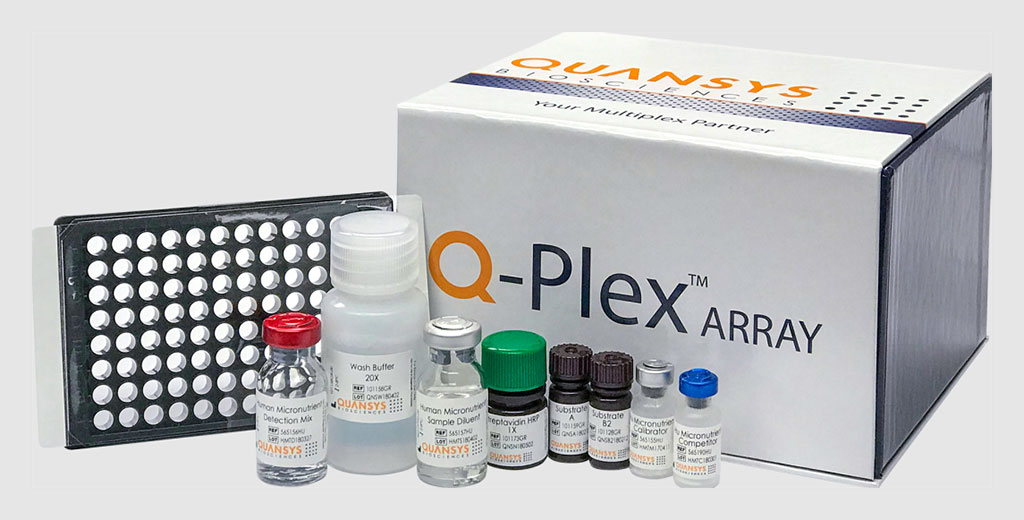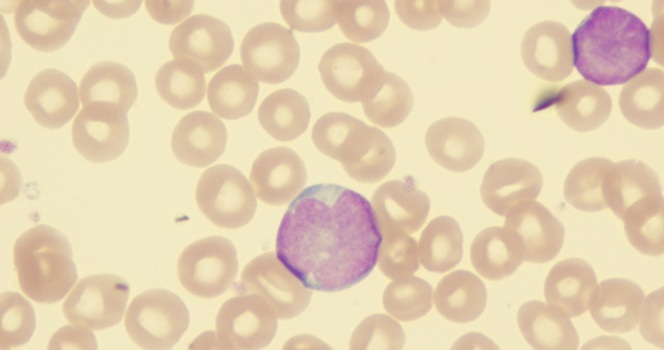Multiplex Immunoassays Enable Quantification of Malaria Antigens
|
By LabMedica International staff writers Posted on 16 Jun 2022 |

The standard of care for malaria diagnosis is blood smear microscopy and antigen detection through rapid diagnostic test (RDT). Microscopy has limitations in terms of difficulty in identifying mixed infections and RDTs are more amenable for the diagnosis of malaria in settings with limited laboratory infrastructure.
Immunoassay platforms that simultaneously detect malaria antigens including histidine-rich protein 2 (HRP2)/HRP3 and Plasmodium lactate dehydrogenase (pLDH), are useful epidemiological tools for rapid diagnostic test evaluation. The gold standard for malaria detection is confirmation of the presence of parasite DNA or RNA in whole blood by polymerase chain reaction (PCR) testing.
A team of medical scientists led by those at the Diagnostic Group, PATH (Seattle, WA, USA) studied the comparative evaluation of two multiplex platforms in identifying Plasmodium falciparum with presence or absence of HRP2/HRP3 expression as being indicative of hrp2/hrp3 deletions and other Plasmodium species.
The team used a 77-member panel of specimens composed of the World Health Organization (WHO, Geneva, Switzerland) international Plasmodium antigen standards, cultured parasites for P. falciparum and Plasmodium knowlesi, and clinical specimens with mono-infections for P. falciparum, Plasmodium vivax, and Plasmodium malariae was generated as both whole blood and dried blood spot (DBS) specimens.
Assays for HRP2, P. falciparum–specific pLDH (PfLDH), P. vivax–specific pLDH (PvLDH), and all human Plasmodium species Pan malaria pLDH (PanLDH) on the Human Malaria Array Q-Plex (Quansys Biosciences, Logan, UT, USA) and the xMAP platforms (Luminex, Austin, TX, USA) were evaluated with these panels.
The investigators reported that the xMAP showed a higher percent positive agreement for identification of hrp2-deleted P. falciparum and Plasmodium species in whole blood and DBS than the Q-Plex. For whole blood samples, there was a highly positive correlation between the two platforms for PfLDH and PvLDH, moderate positive correlation for HRP2, and poor correlation for PanLDH. The xMAP HRP2 assay appeared to cross-react with HRP3, while the Q-Plex did not. The Q-Plex PfLDH assay cross-reacted with P. malariae, while the xMAP did not. For both platforms, P. knowlesi was detected on the PvLDH assay. The WHO international standards allowed normalization across both platforms on their HRP2, PfLDH, and PvLDH assays in whole blood and DBS.
The authors concluded that Q-Plex and xMAP show good agreement for identification of P. falciparum mutants with hrp2/hrp3 deletions, and other Plasmodium species. Quantitative results from both platforms, normalized into international units for HRP2, PfLDH, and PvLDH, showed good agreement and should allow comparison and analysis of results generated by either platform. The study was published on June 7, 2022 in the Malaria Journal.
Related Links:
Diagnostic Group, PATH
World Health Organization
Quansys Biosciences
Luminex
Latest Technology News
- Artificial Intelligence Model Could Accelerate Rare Disease Diagnosis
- AI Saliva Sensor Enables Early Detection of Head and Neck Cancer
- AI-Powered Biosensor Technology to Enable Breath Test for Lung Cancer Detection
- AI Model Achieves Breakthrough Accuracy in Ovarian Cancer Detection
- Portable Biosensor Diagnoses Psychiatric Disorders Using Saliva Samples
- Cell-Sorting Device Uses Electromagnetic Levitation to Precisely Direct Cell Movement

- Embedded GPU Platform Enables Rapid Blood Profiling for POC Diagnostics
- Viral Biosensor Test Simultaneously Detects Hepatitis and HIV
- Acoustofluidic Device to Transform Point-Of-Care sEV-Based Diagnostics
- AI Algorithm Assesses Progressive Decline in Kidney Function
Channels
Clinical Chemistry
view channel
Chemical Imaging Probe Could Track and Treat Prostate Cancer
Prostate cancer remains a leading cause of illness and death among men, with many patients eventually developing resistance to standard hormone-blocking therapies. These drugs often lose effectiveness... Read more
Mismatch Between Two Common Kidney Function Tests Indicates Serious Health Problems
Creatinine has long been the standard for measuring kidney filtration, while cystatin C — a protein produced by all human cells — has been recommended as a complementary marker because it is influenced... Read moreMolecular Diagnostics
view channel
Simple Urine Test to Revolutionize Bladder Cancer Diagnosis and Treatment
Bladder cancer is one of the most common and deadly urological cancers and is marked by a high rate of recurrence. Diagnosis and follow-up still rely heavily on invasive cystoscopy or urine cytology, which... Read more
Blood Test to Enable Earlier and Simpler Detection of Liver Fibrosis
Persistent liver damage caused by alcohol misuse or viral infections can trigger liver fibrosis, a condition in which healthy tissue is gradually replaced by collagen fibers. Even after successful treatment... Read moreHematology
view channel
Platelet Activity Blood Test in Middle Age Could Identify Early Alzheimer’s Risk
Early detection of Alzheimer’s disease remains one of the biggest unmet needs in neurology, particularly because the biological changes underlying the disorder begin decades before memory symptoms appear.... Read more
Microvesicles Measurement Could Detect Vascular Injury in Sickle Cell Disease Patients
Assessing disease severity in sickle cell disease (SCD) remains challenging, especially when trying to predict hemolysis, vascular injury, and risk of complications such as vaso-occlusive crises.... Read more
ADLM’s New Coagulation Testing Guidance to Improve Care for Patients on Blood Thinners
Direct oral anticoagulants (DOACs) are one of the most common types of blood thinners. Patients take them to prevent a host of complications that could arise from blood clotting, including stroke, deep... Read moreImmunology
view channel
New Test Distinguishes Vaccine-Induced False Positives from Active HIV Infection
Since HIV was identified in 1983, more than 91 million people have contracted the virus, and over 44 million have died from related causes. Today, nearly 40 million individuals worldwide live with HIV-1,... Read more
Gene Signature Test Predicts Response to Key Breast Cancer Treatment
DK4/6 inhibitors paired with hormone therapy have become a cornerstone treatment for advanced HR+/HER2– breast cancer, slowing tumor growth by blocking key proteins that drive cell division.... Read more
Chip Captures Cancer Cells from Blood to Help Select Right Breast Cancer Treatment
Ductal carcinoma in situ (DCIS) accounts for about a quarter of all breast cancer cases and generally carries a good prognosis. This non-invasive form of the disease may or may not become life-threatening.... Read morePathology
view channel
Tunable Cell-Sorting Device Holds Potential for Multiple Biomedical Applications
Isolating rare cancer cells from blood is essential for diagnosing metastasis and guiding treatment decisions, but remains technically challenging. Many existing techniques struggle to balance accuracy,... Read moreAI Tool Outperforms Doctors in Spotting Blood Cell Abnormalities
Diagnosing blood disorders depends on recognizing subtle abnormalities in cell size, shape, and structure, yet this process is slow, subjective, and requires years of expert training. Even specialists... Read moreTechnology
view channel
Artificial Intelligence Model Could Accelerate Rare Disease Diagnosis
Identifying which genetic variants actually cause disease remains one of the biggest challenges in genomic medicine. Each person carries tens of thousands of DNA changes, yet only a few meaningfully alter... Read more
AI Saliva Sensor Enables Early Detection of Head and Neck Cancer
Early detection of head and neck cancer remains difficult because the disease produces few or no symptoms in its earliest stages, and lesions often lie deep within the head or neck, where biopsy or endoscopy... Read moreIndustry
view channel
Abbott Acquires Cancer-Screening Company Exact Sciences
Abbott (Abbott Park, IL, USA) has entered into a definitive agreement to acquire Exact Sciences (Madison, WI, USA), enabling it to enter and lead in fast-growing cancer diagnostics segments.... Read more























